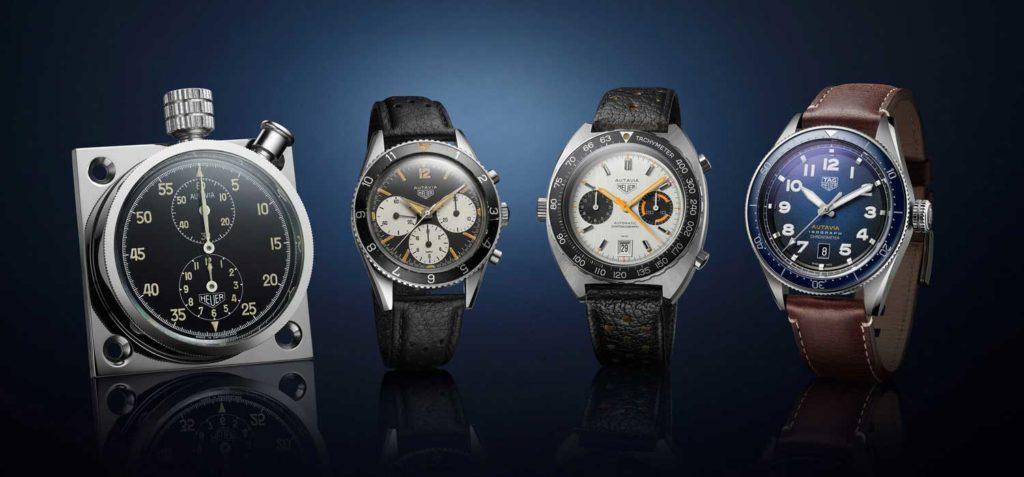
Technological prowess, raffish tobacco ads and an authentic connection to the world of racing drivers – what watch could we possibly be talking about, except for the Autavia?
Earlier this January, TAG Heuer quietly celebrated the Autavia’s 60th birthday with a trio of modern releases, furthering the story of one of the all-time great chronographs sired by the Swiss watch industry. Comprising a COSC-certified travel watch and two flyback chronos (powered by the advanced calibre Heuer 02), the launch was fittingly understated – calling to mind the Autavia’s heritage as a practical, zero-bullsh**t design, purpose-built for those who know and are in turn driven by the dynamic connection between watches and motorsports.
Following two decades of inexplicable obscurity – even amongst many enthusiasts and the TAG Heuer brand itself – it feels only right to set the record straight. Where endemic, better-known designs like the Speedy and Daytona might evoke some element of the romance of motorsports, all along the Autavia has been the tool that racing’s legends turn to in the heat of competition. Simply put, the Autavia is motor racing.

From Dashboards to Wrists : A New Era for the Autavia
Despite its centrality to Heuer’s mythos, the Autavia has always been (in relative terms) the least widely represented of its ‘Big 3’ watches. It was initially launched in 1962: not long after Jack Heuer assumed control of the eponymous company bearing his family’s name. Prior to the 1960s, Heuer S.A had mainly been in the business of manufacturing specialist timing instruments and the ‘Autavia’ was integral to that lineage. A portmanteau of the words ‘Auto’ and ‘Aviation’, the original Autavias were made to be mounted inside airborne and automotive vehicles – frequently, in tandem with an 8-day clock known as a ‘Hervue’. Himself an avid driver, Jack Heuer was reportedly incensed by how “unclear, confusing and very difficult to read correctly in a speeding rally car” these Autavia dashboard set-ups were. So, just 12 months into the job, he went back to basics: working alongside Heuer’s product development team to craft a from-scratch competition driver’s wristwatch. Except for the name.
This new chronograph, intended to improve upon the function and legibility of its dashboard predecessor, was also part of a wider seismic shift occurring at Heuer. Along with the Monaco and Carrera product lines, the Autavia was among the company’s first timepieces to be branded with its own name: a practice that had, until then, been shunned in favour of reference numbering. (This phenomenon wasn’t restricted to the Autavia, as shown in the bifurcation between Ref. 2447s of the ‘pre’ and ‘post-Carrera’ era.)
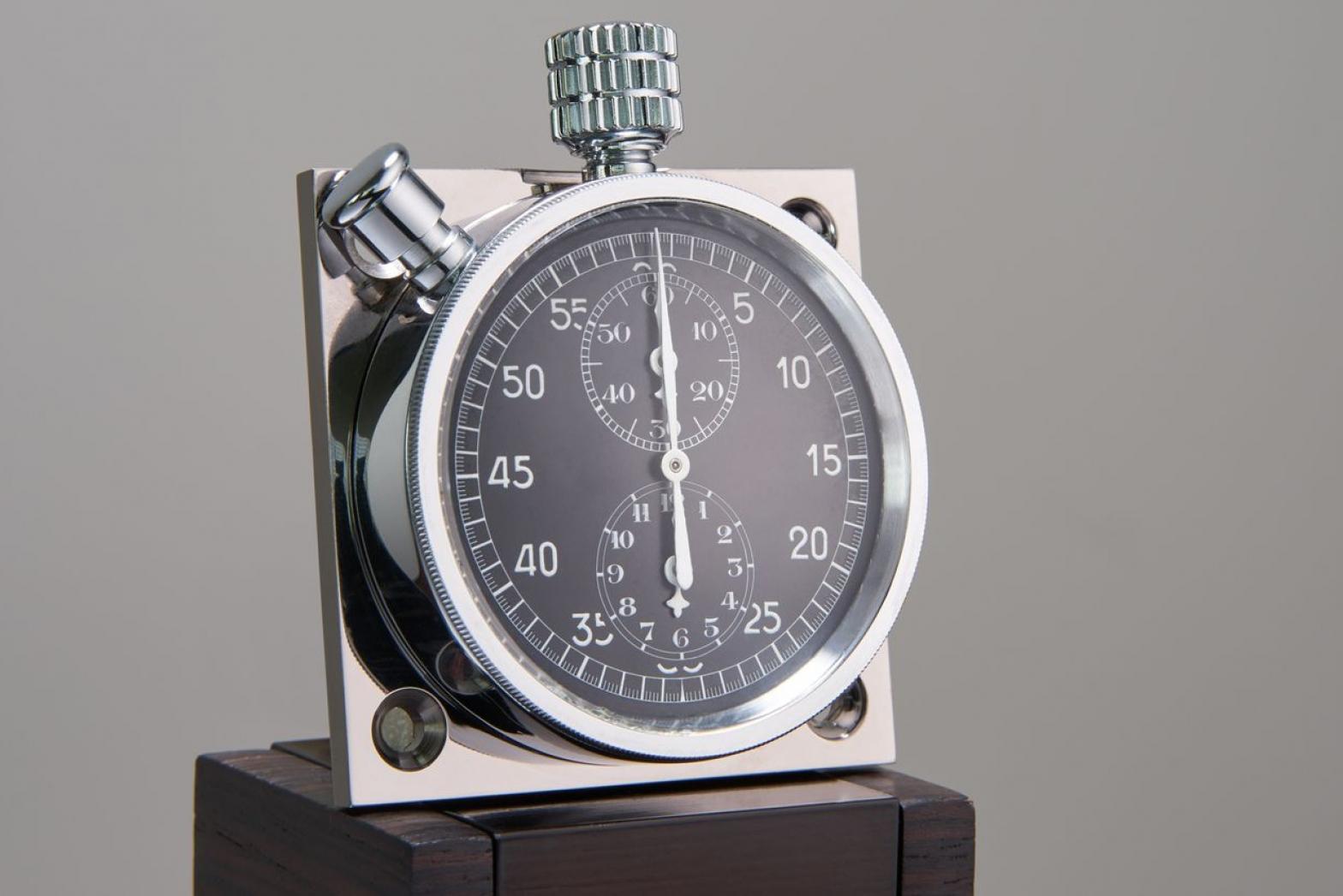


Prior to the Heuer brand’s acquisition by TAG Group in 1985, historians estimate that the Autavia was produced in more than 80 different permutations. What has been consistent over the decades is the inclusion of a turning bezel – again, a now-seemingly unremarkable feature that helped solidify the Autavia’s reputation as a watch for “pilots, sportsmen, divers and scientists” alike. The original models (designated Ref. 2446/3646) were outfitted with both 12-hour and 60-minute bezels, but as the line grew, an increasingly varied range of indications was introduced to cater to different professional activities. Over the years, these have included tachymetres (understandably popular, given the Autavia’s origin as an automotive instrument), 24-hour GMTs and even scales used to manage decompression – as seen so widely in the ‘Diver 100’ models. Undoubtedly, collectors think of the archetypal Autavia as a watch that’s worn whilst gunning down the straight at 300km per hour, but the robustness of its basic format has endeared it to a plethora of interesting, highly collectible permutations over the years.
Generation Game
Among astute collectors of the ‘pre-TAG’ era, it’s generally agreed that Heuer manufactured the Autavia in three generations. The forerunners of this lineage, made between 1962-1969, are revered by purists: consisting of screwback cases; Singer-manufactured dials; and one of two manual-wind chronograph movements (i.e. calibres 92 and 72) supplied by Valjoux. Even here the conversation diverges, with the very earliest executions considered the most representative of what many deem Heuer’s golden age of motorsport-inspired design. ‘First execution’ versions of the two-register 3646, as an illustration, now often sell for upwards of US$25,000: a figure that is somewhat attributable to the inclusion of dauphine hands and ‘oversized’ chronograph registers – details that wouldn’t be widely replicated in any successive generation.
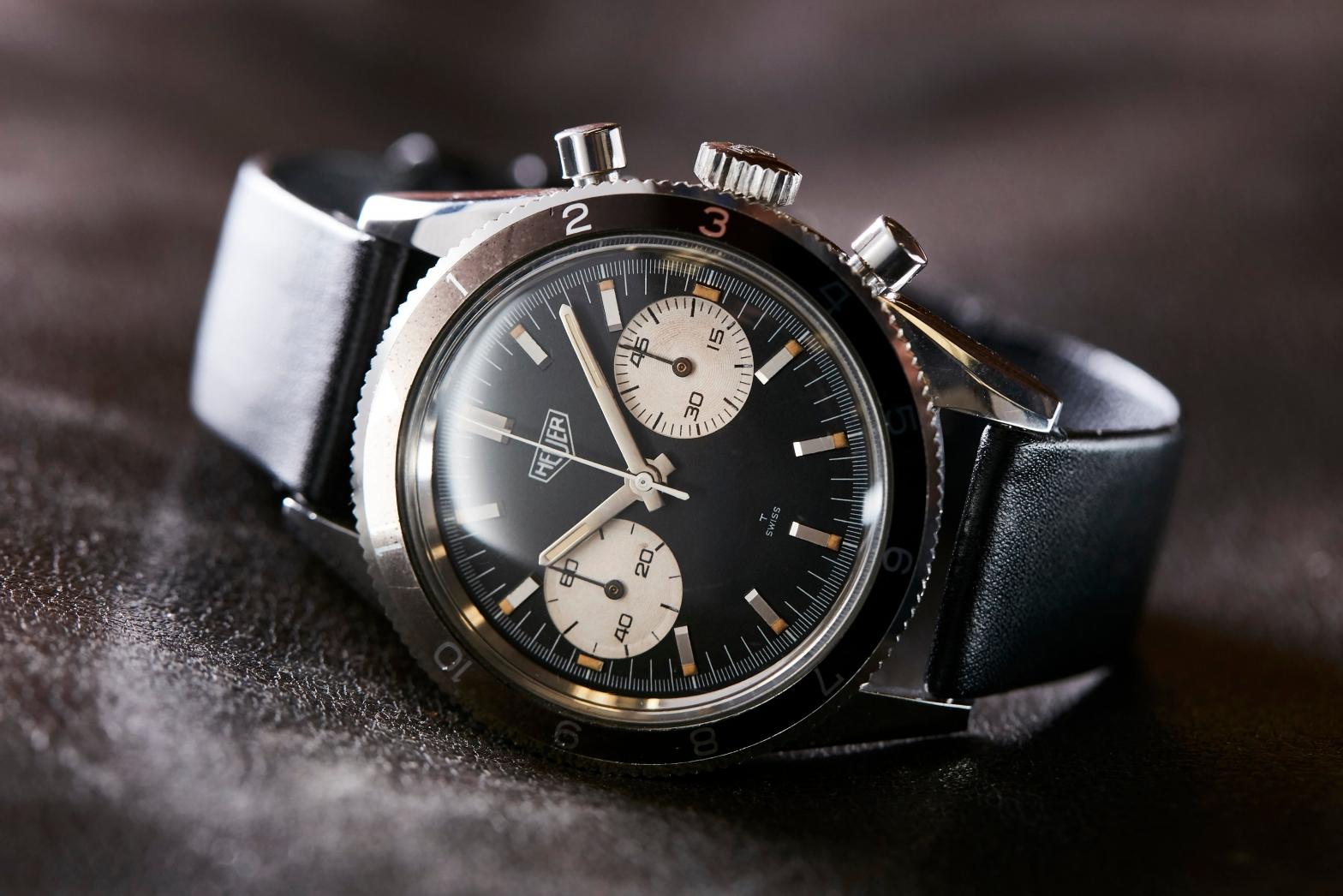
Those early references overlapped with the Autavia’s second generation – best remembered as the era of the ‘compressor’ case. In 1968, Heuer introduced the aforementioned construction in an upsized 40mm diameter; and with it, several minor aesthetic refinements centering on the watch’s handset and lug profile. Owing to the brief interlude for which they were available (less than two years), these second-gen Autavias are frequently regarded as being part of a transitional era.
While the line between the first and second epoch of Autavia design can occasionally be blurry, the watch’s look during the 1970s proved immediately distinctive. “The change from first to second generation may have been evolutionary,” says Calibre 11 founder David Chalmers, “[but] the third generation was a revolution, both inside and out”. In 1969, Heuer unveiled the now-iconic Ref. 1163 – the first in four references to comprise the Autavia’s most populous, well-known generation. At a glance, it was already a major departure from orthodoxy: sporting a C-shaped 42mm case and brutish integrated lugs. Inside, these models were equipped with the new ‘Chronomatic’ calibre 11 – a self-winding chronograph that – like many of the era’s great watchmaking inventions – had been developed in secret, with simultaneous backing from Breitling and Hamilton. To emphasise the Chronomatic’s mechanical sophistication, Heuer designers even moved the Autavia’s crown to the left-hand side. Their message was clear: “the only winding you’ll be doing is to set the time”.


Owing to its production lifespan (i.e. 1969-1985) and sheer variety, the third generation of Autavias is frequently recommended as a jumping-off point for enthusiasts looking to dip their toe into vintage Heuer. With the arrival of Ref. 1163 and its subsequent variants, the company eagerly embraced the spirit of the 1970s: resulting in the addition to the line of prismatic colours like yellow and orange; plus marketing partnerships that spawned some pretty nifty special editions.
In 1972, Heuer executives working in the company’s Americas branch devised an ingenious ploy to sell the Chronomatic Autavias via tobacco advertising – culminating in the production of the much-loved ‘Viceroy’ run. The eponymous tobacco brand (owned by U.S. giant Brown & Williamson) sold 5,000 branded Autavia chronographs to its smokers at the cutthroat price of US$88 apiece – provided they presented one of the promotional vouchers attached to a carton of Viceroy cigarettes. To pacify existing retailers who were already having trouble selling the standard US$200 Autavia, Heuer gave these Viceroy-branded models three cosmetic distinctions – ostensibly, to emphasise their ‘economy’ status. The handset was fitted with red triangular inserts; the hour totaliser sported 12 divisions; and the tachymetre itself was copied from the Ref. 1163T (famously worn by Jo Siffert).
Aesthetics aside, from quality of construction it’s clear these Viceroy chronographs are every inch a part of the Autavia lineage. More importantly, the ‘Auto Racer’ campaign utilised in their marketing – populated by dashing, thrillseeker personas from the Parnelli Jones racing team – brought Heuer to the dais of popular culture, exposing the brand to 70 percent of the American adult population in 1972. In the words of On The Dash founder Jeff Stein, “Viceroy took the Heuer chronograph from a limited market at the racetrack to a much broader audience”.
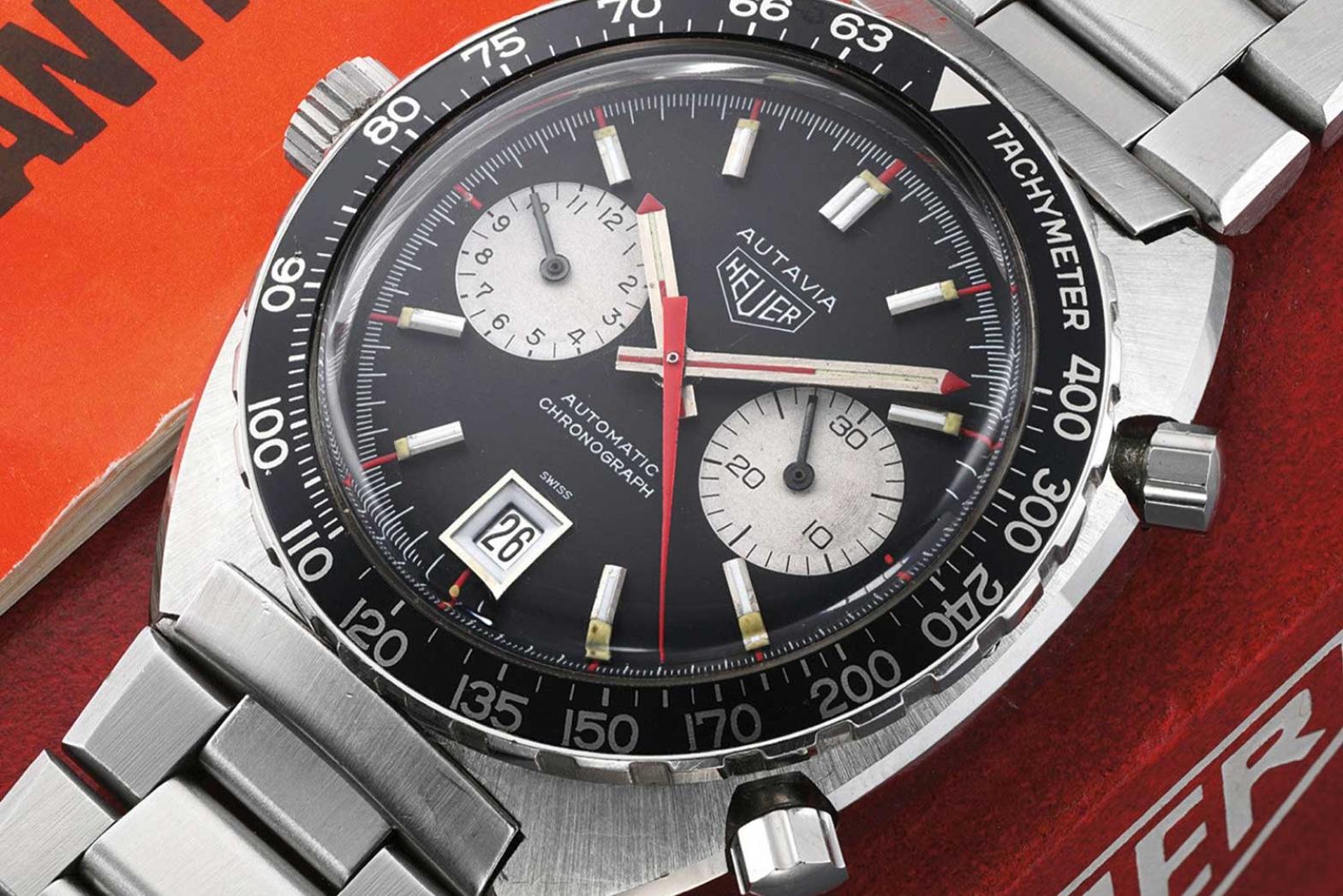
Drive to Thrive: The Autavia, Jo Siffert and Acclaim in Motorsports
If Viceroy brought the Heuer name to wider cultural attention in the 1970s, then Jo Siffert immortalised the Autavia – in a mere handful of years – within the motorsports community. Described by Stein as “the ultimate racer in the Heuer constellation”, Siffert made his bones driving for the Porsche factory sportscar team during the 1960s. In 1968, the Swiss driver claimed victory at not one, but two of the most vaunted endurance races in professional motorsports (namely, Daytona and Sebring) behind the wheel of the Porsche 907. Then, later that year, he parked himself permanently in racing’s hall of fame by going on to win the British Grand Prix at Brands Hatch – all whilst doing so as Formula One’s “last genuine privateer”. This status, as a scrappy, self-reliant contender who so often maintained his own vehicles, endeared Siffert to Jack Heuer; with their friendship leading to a guerilla sales strategy that would win applause even by the standards of modern ad executives.

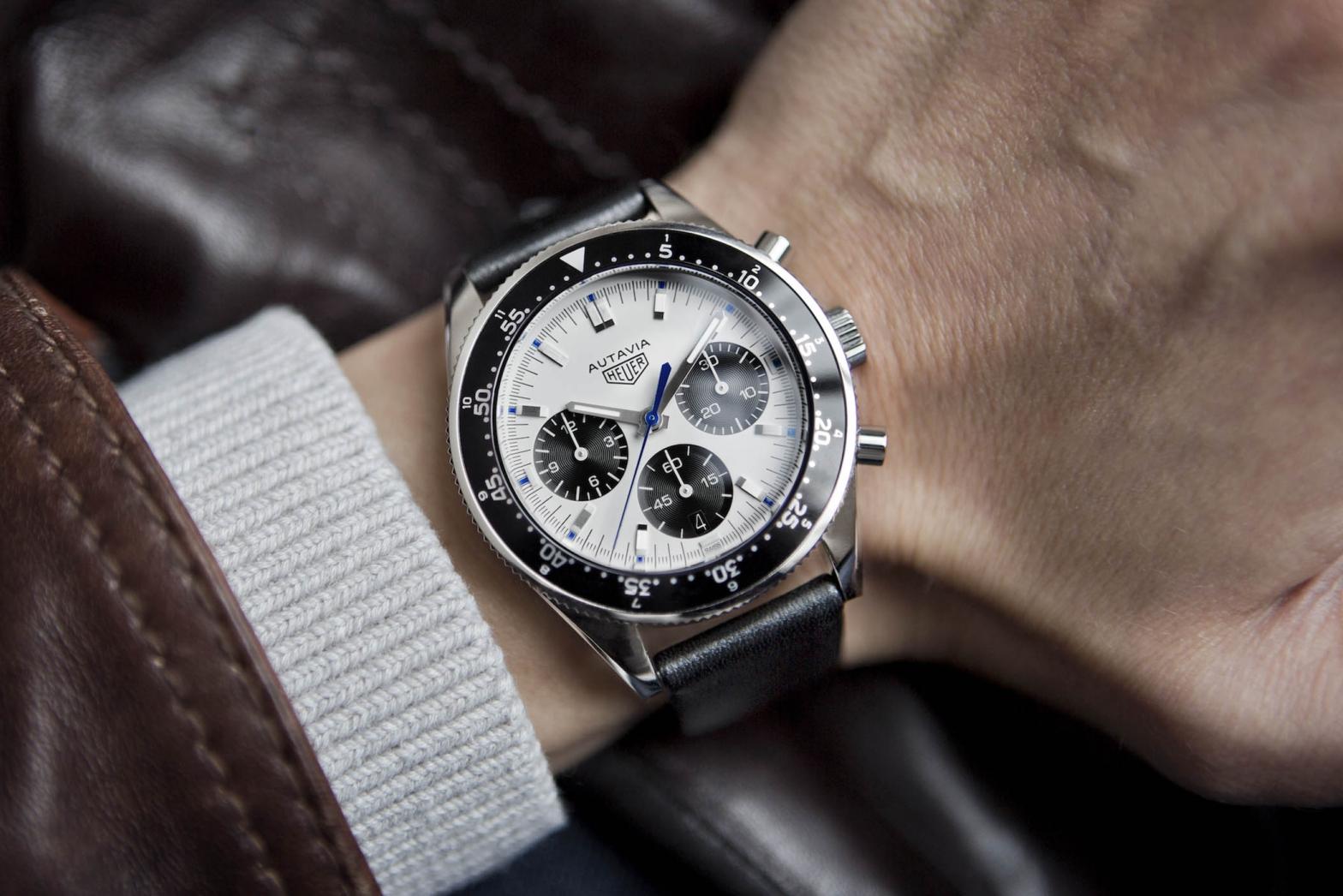

To offset the cost of Siffert’s privateer expenses, Heuer supplied a range of its chronographs to the Swiss driver at wholesale prices. Siffert then took these into the paddock at formula racing circuits and, in a brilliantly straightforward move, began selling them directly to fellow drivers. Between legendary competitors the likes of Jochen Rindt, Clay Regazzoni and Mario Andretti, throughout the 1960s and 1970s, the Autavia is documented exhaustively as the ‘it’ watch of international racing.
These formidable credentials, it goes without saying, were down to Siffert’s passion for watches and a spot of entrepreneurship. Indeed, so great is Siffert’s legacy in the shared arena of Heuer and racing that collectors simply refer to the Ref. 1163T as the ‘Siffert’ Autavia. These executions are typified by a panda-style black-on-white dial, accented by a chronograph hand in the most electrifying shade of medium blue. Well-known to be Siffert’s own Autavia of choice throughout his career, examples of these in good condition routinely fetch up to US$15,000. That, as far as we’re concerned, is none too high a price to pay – because what you’re getting is a living, ticking link to motor racing’s heyday.
